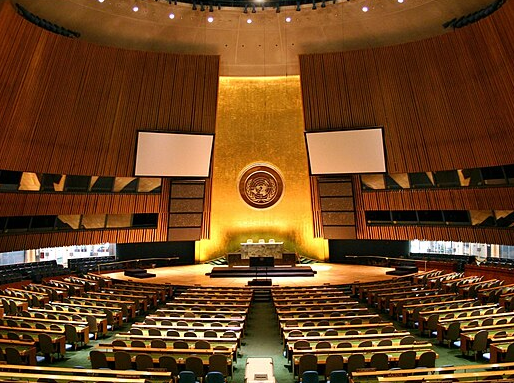
The United Nations is widely recognized for its role as a mediator between countries all over the world. However, in light of recent geopolitical events, the United Nations’ ability to foster cooperation has become increasingly questioned, doubted, and inhibited.
The grim reality of the United Nations was showcased for the world to see at the September 2023 General Assembly summit. The two-week summit, which took place in New York City, was the 78th annual session of the General Assembly. Worryingly, the results of the gathering indicate signs of both deteriorating global cooperation and the troubling state of the United Nations organization itself.
The Beginning of the United Nations
In order to understand the condition and importance of the United Nations today, it is first necessary to comprehend the background and history of the organization.
The United Nations (UN) was created in October of 1945, shortly after the end of World War II. At the time, it was composed of 51 member states, which were defined as sovereign states, typically being nations. The UN’s original purpose was to foster peace in order to prevent another world war.
Upon the creation of the organization, the UN Charter was drafted, which set up the six sections, formally called the “organs” of the UN. These organs are separate bodies of the UN, made up of select countries or people, that each serve a specific purpose in the organization. The organs still govern UN operations today – thus, the UN Charter has become one of the most influential documents of the century.
The Organs of the United Nations
The two most important organs of the UN are the Security Council and the General Assembly.
The Security Council is a small yet significant organ. It has 5 permanent members – Britain, China, France, Russia, and the United States – as well as 10 non-permanent members who serve two-year terms on the council. The Security Council was originally formed to encourage countries who had allied during World War II to join the UN in its early stages. In the modern day, the Security Council is extremely powerful and is able to implement important policies, such as the imposition of economic sanctions or deployment of forces.
However, the Security Council constantly faces a major obstacle when trying to execute certain resolutions; each one of the permanent members of the Security Council has veto power, which can make it extraordinarily difficult to make decisions, especially in the modern day where the members of the Security Council are highly divided. For instance, since the initial Russian invasion of Ukraine, the Security Council has constantly tried to pass a resolution that would force Russia to pull out from Ukraine – unfortunately, Russia vetoes these resolutions.
The General Assembly, on the other hand, is a much larger body. It is the only organ of the UN in which all 193 member states have equal representation. It convenes once a year, but its power is very limited; the General Assembly is regarded as a discussion and, as such, it can only make recommendations rather than decisions in regard to international matters.
Nevertheless, the General Assembly holds many other powers. For instance, they appoint the UN Secretary-General and the Security Council’s 10 non-permanent members. Ultimately, the General Assembly provides leaders with an opportunity to voice their opinions and thoughts to the world.
The rest of the organs of the UN serve to aid the organization in its day-to-day activities. Although less known, they are just as crucial to the UN’s functionality.
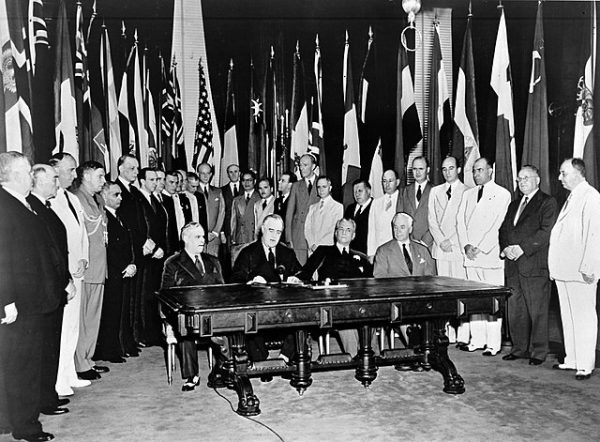
The Secretariat organ of the UN is one instance of this. It manages the UN’s daily activities and operations, focusing on administrative work. The head of the Secretariat is the UN Secretary-General, who also serves as the chief administrative officer of the UN.
The Economic and Social Council is the fourth organ. It is constituted of 54 elected members, and its name speaks to its duties – this organ manages the economic and social work of the UN.
The International Court of Justice organ is known as the “World Court” – one can think of it as the Supreme Court of the entire globe. It is composed of 15 judges, who each serve nine-year terms, and it is where nations bring cases of international law against other nations.
The last of the six organs of the UN is the Trusteeship Council. The Trusteeship Council was originally created to oversee territories taken from conquered nations after World War II. However, after 1994, there were no such territories left, and the council ceased operations.
Although the UN charter was created nearly eight decades ago, in what seems to be a completely different geopolitical climate, its applications remain largely the same. Indeed, in a personal interview that I conducted with Stéphane Dujarric, spokesman of the UN Secretary-General, Dujarric stated, “Clearly, the world has changed. However, a lot of the structures of the UN have not changed.”
This highlights an unsettling potential reality – that society today is eerily similar to that of 80 years ago, and that, although the globe has spent decades attempting to learn from past mistakes, these attempts have been only that, ultimately achieving no success.
Attendance at the 2023 General Assembly Meeting
At the 2023 General Assembly, the United States was the only country in the Security Council represented by its leader, President Joe Biden. Furthermore, only 10 of the G20 countries – the 20 most powerful countries in the globe – were represented by their presidents or prime ministers, and 40% of African leaders were absent.
This lack of attendance demonstrates a concerning trend – that amid growing geopolitical tensions, when unity is needed most, many UN member states have instead halted cooperation with one another and ceased efforts to support the UN. This year’s meeting revealed how deep these tensions are, as well as their intense ramifications. There is clearly an increasing lack of respect for and commitment to the UN.
Notably, President Zelynsky of Ukraine attended the General Assembly for the first time in person since the Russian invasion of Ukraine. However, unlike in recent years, Ukraine was not a big focus of this meeting. Instead, the meeting was focused on the demands of the nations constituting a group called the Global South.
The Global South at the 2023 General Assembly Meeting
The countries of the UN are typically divided into two categories. One category is the Global North, which includes Australia, Europe, North America, Israel, Japan, South Korea, and New Zealand.
The Global South, on the other hand, represents the former colonies of the Global North. The Global South includes 78 nations across Africa, Asia, Oceania, Latin America, and the Caribbean.
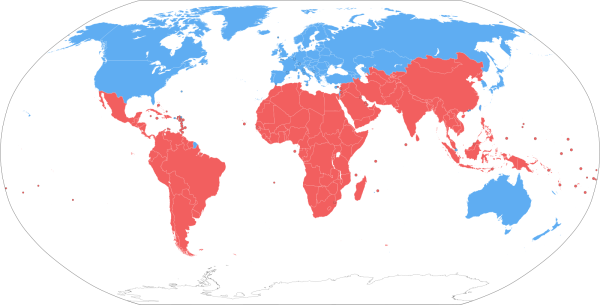
Recently, the Global South has been plagued by constant crises, and has grown frustrated by the West’s constant attention on the conflict in Ukraine. For years, these countries have lived in a world dictated by the Global North, and have finally stepped up to say “enough is enough.”
However, this ‘uprising’ threatens the security of the West, as China considers itself to be part of the Global South, and views the support of the rest of the Global South to be critical in countering Western hegemony.
Alarmingly, China is using this friendship to speak on behalf of the rest of the Global South, amplifying its personal voice and framing it to be representative of the masses.
This perceived attack on Western hegemony is only escalated by Russia’s ongoing invasion of Ukraine, a horrific ambush that is seen not only as an attack on Ukraine, but also as an attack on the North Atlantic Treaty Organization (NATO), a military alliance that includes many European countries in addition to the United States, Canada, and Turkey.
Critically, the West’s ability to fight Russia and effectively support Ukraine is dependent on Western hegemony and power – the same hegemony that is being challenged by China’s exploits of the Global South’s frustration against the West.
Thus, many Western diplomats have acknowledged that, in order to move forward with their counter-offensive against Russia in Ukraine, they first need to answer the demands of the Global South.
Indeed, these two issues and conflicts are extremely intertwined. For instance, the war in Ukraine has particularly negatively affected the nations of the Global South, whose energy and food supply have suffered as a result. Thus, it is evident that a holistic approach is truly needed when considering international relations and events. The UN cannot simply choose one or the other; in Dujarric’s words, “we need to be focused on everything.”
Nevertheless, it is extremely apparent that the Global South does require more attention than it has been receiving. Throughout history, they have constantly been overlooked, shoved to the side, and the consequences of these actions are manifesting more than ever in the status quo – as made apparent through persistent conflicts, humanitarian crises, and, lately, failure to meet the UN’s Sustainable Development Goals.
The United Nations’ Sustainable Development Goals
The Sustainable Development Goals, also called the SDGs, are goals that the UN hopes to meet by 2030 in order to achieve peace and success for the planet and its people, both in the present day and decades into the future. They are a central pillar of the organization.
The UN has 17 SDGs, which were established in 2016. They include no poverty, zero hunger, climate action, and gender equality.
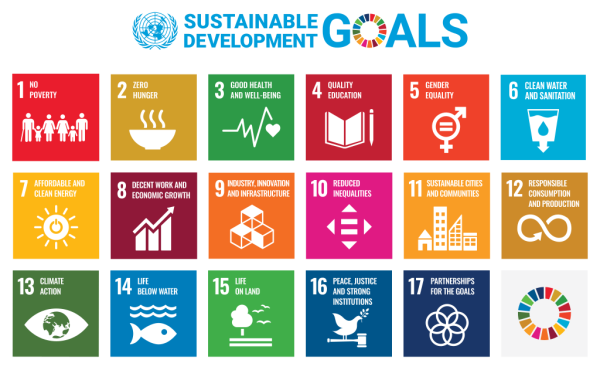
This year’s General Assembly meeting was ultimately focused on ways to help the Global South reach the UN’s SDGs. The Global South is not unique in its failure to meet the SDGs though; as of the 2023 General Assembly meeting, which took place at the halfway mark – seven years after the SDGs had originally been established, seven years before their ‘deadline’ – only 15% of SDGs had been met and 50% were off track. “COVID-19 set us back years,” Dujarric explained.
Nevertheless, the Global South’s issues remain at the forefront of this matter, as they are disproportionately affected by the consequences of the failure to meet the SDGs.
Notably, though, meeting the SDGs is extremely important as they are key to a bright future. The SDGs serve as preventative measures – Dujarric explains that by investing in them, you are investing in education, women’s rights, the environment, and more, and thus “you lessen your chances of conflict.”
Many diplomats have acknowledged this major issue. Yet, it is unclear what can be done to solve it. Some officials, such as UN Secretary-General António Guterres, have suggested increasing the financing of the SDGs. This would especially help the Global South, who have received particularly inadequate SDG funding.
Meanwhile, increased representation and acknowledgment of the Global South on the stage of the UN will aid them in moving closer to achieving their goals.
Despite these efforts, however, many diplomats still say that the SDGs will not be met by 2030. While this truth can be hard to brunt, it is one that may become inevitable. .
The Future of the United Nations and Potential Reforms
Unfortunately, the absence of many world leaders at the General Assembly indicates that the UN is rapidly weakening, and due to geopolitical tensions, the future of the UN seems bleak. As days pass by, the possibility of effective multilateralism steadily declines; this predicts a horrifying future for the world that some officials describe as a cliff edge.
The UN’s weakness is apparent in multiple aspects of the UN’s operations.
The Security Council is, in the eyes of many officials, one of the most obvious signs of UN failure; many say that Russia’s unconditional veto power leaves the Security Council completely powerless.
Others say that the membership of the Security Council is too exclusive. Dujarric contended that “most of the peace and security work that the UN does, which is the heart of the work of the Security Council, is focused in African countries.”
Yet, Dujarric continued, “there is not one permanent member of the Security Council that’s from Africa.” This illustrates the negative impacts of the fact that the UN’s structure has remained unchanged since the organization’s creation; Dujarric explained that many countries’ voices are silenced in the present day because “they were not at the table when the building was built.”
Moreover, many view the UN’s weak reaction to Russia’s invasion of Ukraine as a representation of the UN’s bleak future, arguing that it should have been able to impose more consequences on Russia.
Others argue that enforcing consequences would be overstepping. They reason that the UN should not hold the power to dictate the actions of the Russian government, just as they should not dictate the actions of any other government such as the United States. Instead, many believe that consequences must be enforced by other nations themselves, asserting that only other great powers have the ability to stop Russia.
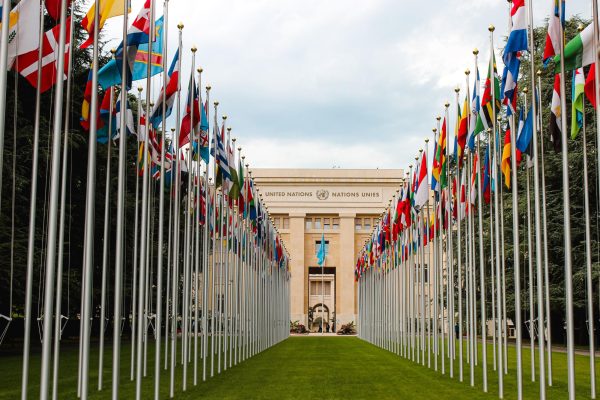
Furthermore, many believe that the UN’s patent failure to meet its SDGs reflects poorly on the organization.
But what can be done to solve these issues and save the UN? Although nearly everyone agrees that reform is needed, diplomats disagree on the exact methodology of doing so.
Indeed, this reform can occur in several different ways. For instance, in order to resolve the apparent corruption of the Security Council, many have advised either enlarging the Security Council, or amending the veto power of its members. Others say that the UN rules should be changed to allow the General Assembly to override a Security Council veto by a two-thirds vote.
Moreover, as mentioned earlier, many have advocated for increased funding for the UN SDGs in order to put the UN back on track.
As a whole, many have called for increased multilateralism. Accordingly, the Partnership for Atlantic Cooperation was recently launched. The Partnership for Atlantic Cooperation is a forum that includes coastal Atlantic countries in Africa, Europe, North America, South America, and the Caribbean, and aims to collaborate in matters regarding the Atlantic Ocean. However, this is just one step of many that need to be taken, and it is unclear how effective it will be.
Above all, multilateral cooperation and unity are a prerequisite for reform. Dujarric reasons that implementing reform is “a matter of countries coming together” – something that is becoming increasingly difficult in the status quo. Yet, there is still hope.
Regardless, it is crucial to keep fighting for the UN, as it is key to maintaining the global cooperation that is necessary to solve important issues such as climate change, pandemics, and more. As Dujarric stated, “there is no alternative to multilateral cooperation.”
Ultimately, despite the fact that the UN’s role as a negotiator and mediator has become increasingly marginalized, the future of the world’s leading international institution is still salvageable.
Crucially, it is up to not only the leaders of the world, but also to the voices of the upcoming generation, to save the one chance we have left of a peaceful future.
As days pass by, the possibility of effective multilateralism steadily declines; this predicts a horrifying future for the world that some officials describe as a cliff edge.
